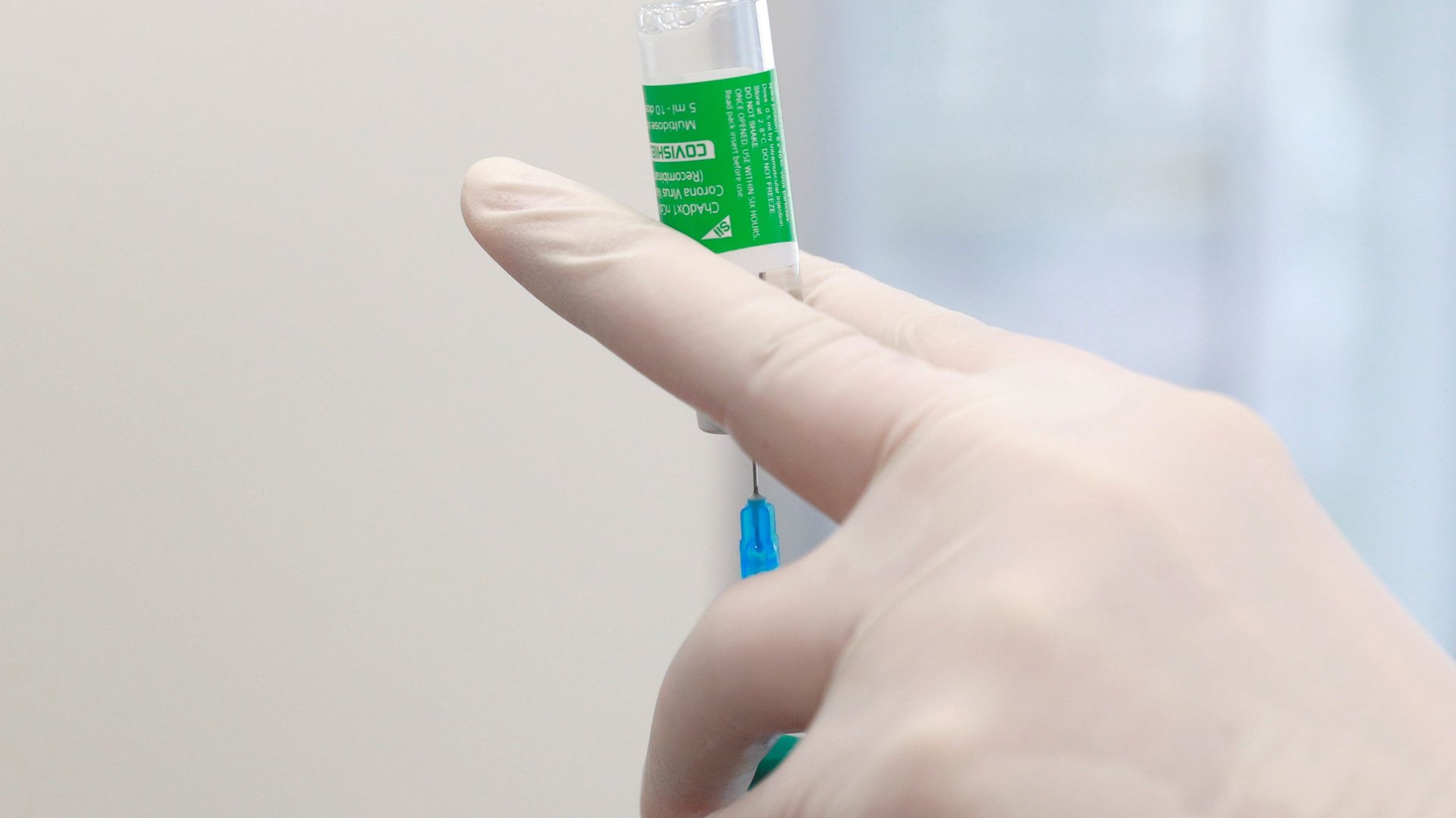A longer vaccine dose interval has more than one benefit for India
The Indian government’s updated guidance on a Covid-19 vaccine couldn’t have come at a better time.


The Indian government’s updated guidance on a Covid-19 vaccine couldn’t have come at a better time.
Yesterday (March 22), the central government wrote to the states asking them to increase the recommended gap between the two doses of Covishield, Serum Institute of India’s (SII) vaccine made using the AstraZeneca vaccine’s master seed. Initially, the second dose of the vaccine was to be taken between four and six weeks of the first dose.
But AstraZeneca’s UK trial, which went through several inadvertent anomalies, showed that when the dosing gap was increased to up to 12 weeks, the vaccine’s efficacy against symptomatic disease went up to over 80%. The same efficacy was down to about 55% when the second dose was administered after four weeks, according to a study published in the medical journal Lancet on March 6.
The World Health Organization had also recommended a similar dosing schedule for this vaccine on Feb. 24. Based on this evidence, India’s National Expert Group on Vaccine Administration for Covid-19 (Negvac) finally gave the nod to change the dosing schedule from the earlier recommended gap of four-six weeks to four-eight weeks. It also said that Covishield was proven to be more efficacious when the second dose was administered six-eight weeks after the first.
The four-week dosing gap for Covaxin, India’s homegrown Covid-19 vaccine, remains unchanged.
This is particularly important because India had, thus far, been resisting this change. But a longer dosing gap has one big advantage.
Delayed vaccine shipments
India has been leveraging its position as the world’s largest vaccine manufacturer to foster geopolitical relationships. But delays in shipments to countries like the UK could derail this initiative.
SII, on its part, has said that these delays have occurred because of the Indian government’s export restrictions, and have “nothing to do” with the company’s production line. Potentially, now, with a longer dosing schedule, India could manage the stocks of the vaccines in a manner that would keep both its domestic and geopolitical interests aligned.
But as the scientific evidence on the Covid-19 vaccines keeps emerging, India will also need to be nimble in its decision-making.
A new AstraZeneca trial
For instance, AstraZeneca released data from its trial in the US on March 22, which found the vaccine had 79% efficacy in preventing symptomatic disease, and 100% efficacy against severe disease and hospitalisation.
But this trial was conducted with a four-week dosing schedule. And though AstraZeneca says the vaccine increases in efficacy when the second dose is taken with an extended interval of up to 12 weeks, the data for the four-week gap were also far more promising than what emerged out of the UK trial.
Till more conclusive evidence on the dosing gap comes out, the US trial also analysed data for clotting events, reported adverse events that had paused the AstraZeneca roll-out in some European countries. But the US trial found “no increased risk of thrombosis or events characterised by thrombosis among the 21,583 participants receiving at least one dose of the vaccine,” the company said.
But AstraZeneca, and by extension SII in India, would need to explain these differing data, especially after the US government’s Data and Safety Monitoring Board (DSMB) raised an alarm over the validity of these results. In a statement yesterday (March 22), the DSMB “expressed concern that AstraZeneca may have included outdated information from that trial, which may have provided an incomplete view of the efficacy data.” The DSMB wants to work with AstraZeneca “to review the efficacy data and ensure the most accurate, up-to-date efficacy data be made public as quickly as possible.”